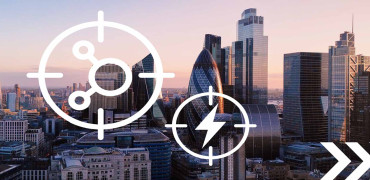Sustainability has become a watchword for professionals in the built environment. Everyone from architects to M&E consultants to contractors is well-aware of the need to consider the long-term environmental impact of buildings.
But it’s the building owners who pay for sustainable features and technologies in buildings, and it’s fair enough if, at times, they ask if it’s worth it. This is equally true of owners of existing buildings – should they invest in sustainability-focused retrofits?
The short answer to both questions is ‘Yes’. That’s not just on the principle that doing the right thing by the environment is what we should always aim for. There are also significant financial benefits for building owners who embrace sustainability and view it as an opportunity.
New-build projects are increasingly required by legislation to meet higher targets on energy efficiency and carbon emissions, so sustainability is now ‘baked in’ to a large extent. However, meeting today’s targets should be regarded as a baseline.
Why aim for ‘just enough’ when owners will face the cost of upgrades in a few years?
Higher targets
With net zero 2050 firmly in its sights, the government is pushing harder and faster on lifting targets – why aim for ‘just enough’ when a building owner is likely to face the cost of upgrades in a few years?
The same applies to older buildings. Owners cannot allow their properties to become stranded assets – left unlettable or unsellable by changing regulations such as the Minimum Energy Efficiency Standards.
Looked at from this viewpoint, the cost of doing nothing is much, much higher than retrofitting for better building carbon performance.
The rising costs of gas
Another important financial consideration when weighing the cost vs sustainability equation is the operating cost of a building. With the UK’s objective of a green electricity network by 2030, predictions are that gas prices will inevitably increase, and all building heating systems will move away from fossil fuels.
The electrification of UK buildings is already underway, with many retrofit projects removing gas or oil from a building entirely. At Mitsubishi Electric we work regularly with clients who are making the switch to low-carbon electric heating and hot water with our range of commercial heat pumps.
Building owners who make the investment in modern, energy efficient heat pump systems can start to reap the benefits immediately – saving money on energy costs from day one and seeing those savings grow over time.
And the answer doesn’t have to be heat pumps. Switching out older air conditioning systems is also a sustainable option with many other benefits. With regulations on refrigerants making big changes in the market, building owners must ensure that they’re not left with systems that are increasingly expensive to maintain because their refrigerant is being phased down – or out.
Mitsubishi Electric’s experts have been able to help many customers retrofit air conditioning systems that use low-GWP refrigerants. For example, the Hybrid VRF system is R32-based, and uses less refrigerant than a standard VRF, giving it a smaller carbon footprint overall.
Keep the customer satisfied
Perhaps the most compelling reason for commercial building owners to lean into sustainability is that their customers want it. Across the property industry, tenants in diverse spaces including offices, retail and warehouses are actively looking for buildings that provide sustainability credentials.
Features such as BREEAM accreditation, EPC ratings of A and zero carbon in operation guarantees are frequently cited – and tenants are willing to pay for them. Many property consultants in the office market, for example, have noted the ‘flight to quality’ which includes buildings with low-carbon footprints and energy-efficient features.
When calculating the costs of sustainability features in new-build or retrofit projects, it’s vital to include the price of doing the minimum or doing nothing. In either case, I think it’s clear that building owners who see sustainability as an opportunity to create value are on the right track.
For owners of existing buildings there is little time to lose to prepare for a Net Zero future. Embracing the opportunities now gives building owners more time to find the best approach and the best technologies for their needs. Far better to make these decisions now, than have them forced on you by legislation when your property investment is losing value rapidly.
Imma Boada is National M&E Manager




